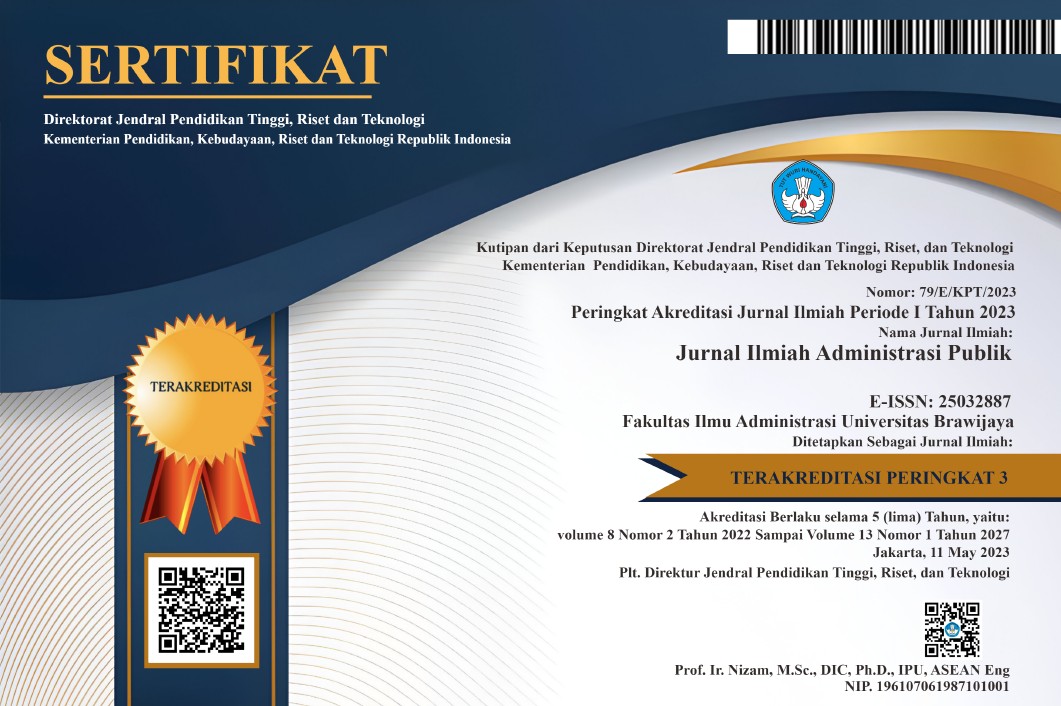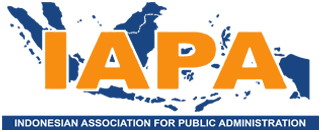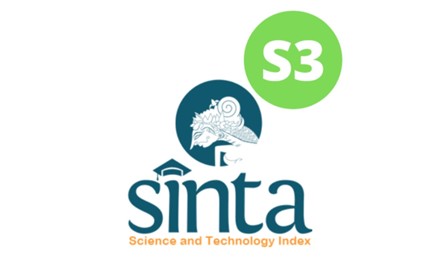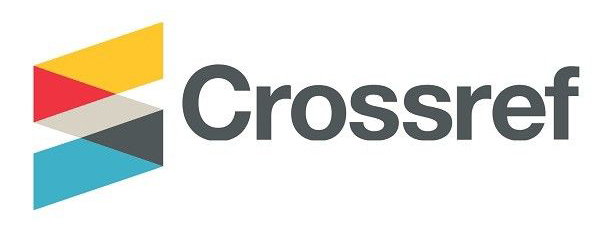Analysis Criteria and Indicator Estimation Smart City in South Tangerang City, Banten Province (An Analysis through Smart Economy)
DOI:
https://doi.org/10.21776/ub.jiap.2019.005.01.9Keywords:
smart economy, fishbone, innovation, entrepreneurship, internasional embedded, flexibility of labour, productivityAbstract
This research describes indicator smart economy in South Tangerang City. This research purpose to give information for Mayor South Tangerang City how competitive her economic city is. The method is used by fishbone. The indicators for smart economy are innovation spirit, entrepreneurship, image and trademarks, productivity, international embedded and flexibility of labour market. The results are that Indicators smart economy South Tangerang city describes that the residences in South Tangerang city are low innovation, high entrepreneur, growth productivity, low flexibility, local product which only krupuk jengkol is favourite food, and economic image and trademarks which have not large market, and companies that have issued stock are available. In South Tangerang City, it does not put productivity (Manpower Agency) and international embedded (Tourism Agency) as smart economy, but manpower agency is smart social and tourism agency is smart brand.References
Arsyad, Lincolin. (2010). Ekonomi Pembangunan. Sekolah Tinggi Ilmu Ekonomi. YKPN, Yogyakarta.
Almulaibari, Hilal. (2011). Analisis Potensi Pertumbuhan Ekonomi Kota Tegal Tahun 2004- 2008 (Penelitian ilmiah). Semarang: Fakultas Ekonomi, Universitas Diponegoro.
Hamel C.K ., & Prahalad, Hamel. (1990). The Core Competence of The Corporation. Harvard Business Review, US.
Hammer, M. (2001). The Agenda: What Every Business Must Do to Dominate The Decade. New York: Crown Publisher.
Hitt et al. (2003). A Model of Strategic Entrepreneurship: The Construct and Its Dimensions. Journal of Management, Vol. 29(6), pp.963-989.
Jhingan, M.L. (2010). Ekonomi Pembangunan dan Perencanaan. Jakarta: Rajawali Pers.
Kanter, Moss R. (2001), Evolve!. Succeding In the Digital Culture of Tomorrow. Harvard Business School Press, Boston.
Kotler, Philip (2004). Marketing Management, The Millenium Edition. Englewood Cliffs, New Jersey: Prentice Hall.
Kuncoro, M. (2006). Otonomi dan Pembangunan Daerah: Reformasi, Perencanaan Strategi dan Peluang. Erlangga, Jakarta.
Lazaroiu, G. C., & Roscia, M. (2012). Definition Methodology for The Smart Cities Model. Energy, Vol. 47(1), pp.326-332.
Letaifa, S.B. (2015). How to Strategize Smart Cities: Revealing the SMART MODEL. Journal of Business Research, Vol. 68, pp.1414-1419.
Stewart. (1999). Kompetensi Industri Daerah Kotawaringin Barat. Jakarta: Kementrian Industri Repulik Indonesia.
Tarigan, Robinson. (2005). Ekonomi Regional, Teori dan Aplikasi. Bumi Aksara, Jakarta.
Todaro M.P. (2006). Pembangunan Ekonomi di Dunia Ketiga. Penerbit Erlangga, Jakarta.
Downloads
Published
Issue
Section
License
If your paper is accepted, the author identified as the formal corresponding author for the paper will receive an email prompting them to login into Author Services; where via the JIAP Author Licensing Service they will be able to complete the license agreement on behalf of all authors on the paper.














